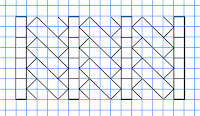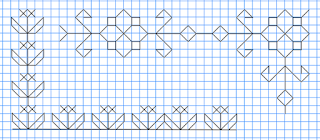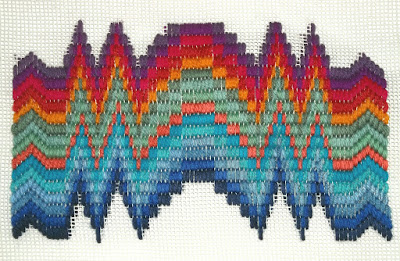*** NEW MATERIALS ON OUR EXTRAS PAGE ***
See more info at end of this post.
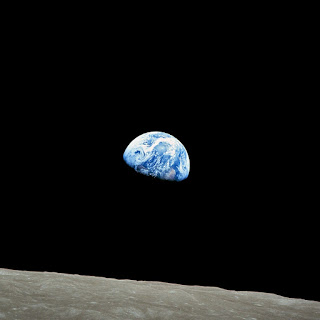 |
| Earthrise, photo graphed from Apollo 8 |
ANNAKE: Those of you who read our post on Earth Day 2019 know that I worked on a project which in 1967 made the Earth Sciences (Astronomy, Geology, Meteorology, Oceanography) mandatory parts of the science curriculum for grades 1-12 in all 50 states. We did a tremendous amount of research while we were trying to determine what scientific principles should be taught at each level. Things that we learned in climatology (a branch of meteorology) and oceanography alarmed us, and we were also made aware of the mass extinctions of much of our planet's animal and plant life. Most of us had also read Rachel Carson's book, Silent Spring, published in 1962.
Not long ago we held a yard sale in which I included a number of outdated science books, including some that had been sent to me by publishers after the new science curriculum was established. One gentleman was very excited by the books and asked me about them. I explained about our efforts in 1967. He thanked me profusely for our efforts. He said he had never known there was such a thing as geology until he read about it in a new textbook. He was "hooked for life". He majored in geology in college and had spent his life as a geologist until the previous year, when he retired.
But, while we got the courses into the textbooks, we did not get the emphasis on those disturbing trends highlighted as we thought they should be. When we received the textbooks from various publishers the following year, very little, if anything, was said about these issues. We felt that no one was listening to us. We wrote letters to teachers in other states, members of state and national government, science magazines, etc. and spoke to our students in detail about environmental issues. Some very important people were listening to us — our students — but they were not really in a position to make much of a difference yet.
One member of Congress shared our concerns — Gaylord Nelson, U.S. Senator from Wisconsin. He was alarmed by the air pollution that was prevalent in large cities and disastrous oil spills like the one in the ocean off California in 1969. He set out to promote what he described to the media as a "natural teach-in" about environmental issues. On April 22, 1970, 30 million Americans — many of them college students and other youths — from coast to coast attended conferences and rallies on environmental issues. That was the first Earth Day. In that same year the Environmental Protection Agency was created. Many environmental projects were supported by both Republican and Democratic members of Congress. (Yes, that can happen!) Important legislation was implemented, including the Clean Air Act, Clean Water Act, and Environmental Protection Act. Earth Day was, and still is, celebrated on April 22nd every year.
For some years, this was an American project, growing in strength and numbers every year. But in 1990 Earth Day went global. It reached 200 million people in 141 countries. President Clinton presented Senator Nelson with the Presidential Medal of Freedom (the highest honor a civilian can receive in the U.S.
J.D.: For about the last 25 years, it has become popular in certain circles to deny that climate change is happening at all; or, if it is happening, that it is just a temporary statistical anomaly or a slow, gradual natural process that we can easily adapt to. For whatever reason — greed, shame, an attempt to avoid blame, belief in massive global conspiracies, ignorance, or just inertia — some cling to this belief despite the overwhelming evidence right before their eyes. Like this:
It’s bad, folks, and getting worse. If anyone wants to argue how we got here or why, or who is to blame, save it for another time and place; right now, we all need to do whatever we can to improve the situation. More importantly, we need to STOP doing anything that might make things even worse: when your house is on fire, you don’t solve the problem by throwing gasoline on it.
A climate agreement was signed by 195 nations in 2016, agreeing to limit global warming, adapt to climate change, and protect Nature. The United States is not currently one of them.
ANNAKE: You probably know that those of us here at Annake's Garden are crusaders for the protection of endangered species. Recently the Weather Channel ™ did a nice interview with National Geographic photographer Joel Sartore. Some years ago, while Sartore was photographing a small, rather insignificant-looking sparrow called the grasshopper sparrow, in Florida, he became interested in species — like that little bird — that were threatened with extinction. After his photo of the bird appeared on the cover of a national magazine, the Florida Fish and Wildlife Service devoted resources to ensure its survival.
Now Sartore is devoting his life to photographing, to the best of his ability, every endangered species while it is still here. He thinks it will take him another fifteen years to complete his project, called The Photo Ark. He films mostly in studios and in protected places like zoos and aquariums. Most of the animals are photographed against a solid black or white background so that the focus is entirely on the animal.
Sartore says that when people look at one of his animal photographs, they are drawn to its eyes. There they see beauty, curiosity, determination, and other characteristics the we, ourselves, possess. All the photos are the same size, so that a little mouse is just as important in its portrait as an elephant is in its portrait. Each one plays a part in the ecology of the Earth and every one is important to all of us.
I really identify with that idea. When I do an animal "portrait", I look at dozens — sometimes hundreds — of photographs, paintings, even cartoons. But I don't want to portray just AN animal; I want to show THE animal. The last part of the picture that I put in is the animal's eyes. It is only then that I know the animal — in a way and at a level that I cannot truly explain.
Sartore says that an iconic photograph, which stands the test of time, can long outlive the photographer. It tells a story. Photographs and photographic projects like The Photo Ark can illuminate the problem and save many endangered animals, if we care enough to help.
For examples of things that young people (and even those of us not so young) can do to help this coming Earth Day — and every day — check out these documents under our Extras tab:
Not long ago we held a yard sale in which I included a number of outdated science books, including some that had been sent to me by publishers after the new science curriculum was established. One gentleman was very excited by the books and asked me about them. I explained about our efforts in 1967. He thanked me profusely for our efforts. He said he had never known there was such a thing as geology until he read about it in a new textbook. He was "hooked for life". He majored in geology in college and had spent his life as a geologist until the previous year, when he retired.
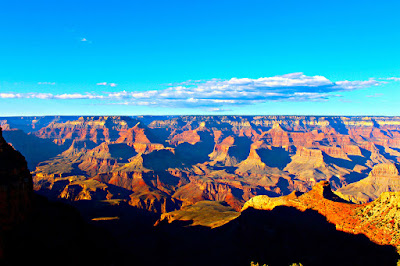 |
| The Grand Canyom, a geologist's playground |
But, while we got the courses into the textbooks, we did not get the emphasis on those disturbing trends highlighted as we thought they should be. When we received the textbooks from various publishers the following year, very little, if anything, was said about these issues. We felt that no one was listening to us. We wrote letters to teachers in other states, members of state and national government, science magazines, etc. and spoke to our students in detail about environmental issues. Some very important people were listening to us — our students — but they were not really in a position to make much of a difference yet.
One member of Congress shared our concerns — Gaylord Nelson, U.S. Senator from Wisconsin. He was alarmed by the air pollution that was prevalent in large cities and disastrous oil spills like the one in the ocean off California in 1969. He set out to promote what he described to the media as a "natural teach-in" about environmental issues. On April 22, 1970, 30 million Americans — many of them college students and other youths — from coast to coast attended conferences and rallies on environmental issues. That was the first Earth Day. In that same year the Environmental Protection Agency was created. Many environmental projects were supported by both Republican and Democratic members of Congress. (Yes, that can happen!) Important legislation was implemented, including the Clean Air Act, Clean Water Act, and Environmental Protection Act. Earth Day was, and still is, celebrated on April 22nd every year.
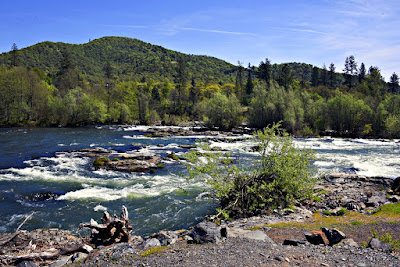 |
| Clean air, clean water, clean shores - the American Dream? |
For some years, this was an American project, growing in strength and numbers every year. But in 1990 Earth Day went global. It reached 200 million people in 141 countries. President Clinton presented Senator Nelson with the Presidential Medal of Freedom (the highest honor a civilian can receive in the U.S.
"It was a gamble, but it worked." — Senator Gaylord NelsonThe theme for Earth Day 2020, on its 50th anniversary, is Climate Control, because this is a major issue which affects everyone and must be dealt with now.
J.D.: For about the last 25 years, it has become popular in certain circles to deny that climate change is happening at all; or, if it is happening, that it is just a temporary statistical anomaly or a slow, gradual natural process that we can easily adapt to. For whatever reason — greed, shame, an attempt to avoid blame, belief in massive global conspiracies, ignorance, or just inertia — some cling to this belief despite the overwhelming evidence right before their eyes. Like this:
- The concentration of carbon dioxide in the atmosphere is the highest it has been for 3 million years.
- The 20 warmest years on record have been in the past 22 years.
- In the year 2019, almost 400 all-time high temperatures were set in the Northern Hemisphere.
- The continent of Australia suffered extreme drought, enormous wildfires, and the loss huge numbers of endangered species.
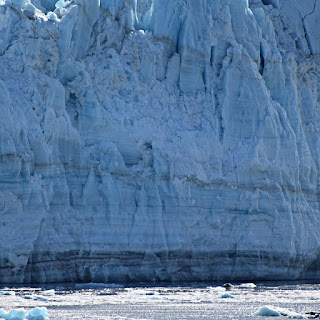 |
| Melting glacier |
- Greenland and Antarctica are losing ice six times faster than they did just 20 years ago. The amount of ice lost by their ice sheets last year would cover the entire state of Texas with a layer of ice 30 feet deep.
- Permafrost, the layer of soil in the arctic that has been frozen for centuries, is melting. This is releasing methane gas gas which was trapped there. Methane is one of the most serious greenhouse gases contributing to global warming. NASA has equipped planes with highly sensitive methane detectors. They have flown over 11,583 square miles (30,000 square kilometers) of Arctic tundra in North America, Asia, and Northern Europe, so far detecting 2 million of these methane "hotspots".
- But there is something else disturbing about the thawing of permafrost. People have been buried in shallow graves in this layer for a very long time. Scientists have already encountered viable samples of the virus which killed so many people in what was called the "Spanish flu" pandemic in 1918. They are now concerned about finding scarlet fever. And it is possible that smallpox — which was declared eradicated in 1980 — may make a reappearance. People have not been vaccinated for that deadly disease for four decades.
- Famine is another danger; in just the past few weeks, countries in Africa and the Near East have lost — and are still losing — huge amounts of their food supplies to hordes of locusts.
 |
| Flood |
- Hurricane season is expanding at both ends.
- In 2019 Hurricane Dorian tied the 84-year record for having the strongest winds at landfall and became the 5th strongest Atlantic hurricane to make landfall in terms of atmospheric pressure.
- Since 1995 there have been 17 above-normal hurricane seasons.
- Now 800 million people are already vulnerable to climate change impacts such as droughts, floods, heat waves, extreme weather events, sea level rise and health issues.
It’s bad, folks, and getting worse. If anyone wants to argue how we got here or why, or who is to blame, save it for another time and place; right now, we all need to do whatever we can to improve the situation. More importantly, we need to STOP doing anything that might make things even worse: when your house is on fire, you don’t solve the problem by throwing gasoline on it.
A climate agreement was signed by 195 nations in 2016, agreeing to limit global warming, adapt to climate change, and protect Nature. The United States is not currently one of them.
| Endangered Lemur (Photo by J.J.) |
Now Sartore is devoting his life to photographing, to the best of his ability, every endangered species while it is still here. He thinks it will take him another fifteen years to complete his project, called The Photo Ark. He films mostly in studios and in protected places like zoos and aquariums. Most of the animals are photographed against a solid black or white background so that the focus is entirely on the animal.
Sartore says that when people look at one of his animal photographs, they are drawn to its eyes. There they see beauty, curiosity, determination, and other characteristics the we, ourselves, possess. All the photos are the same size, so that a little mouse is just as important in its portrait as an elephant is in its portrait. Each one plays a part in the ecology of the Earth and every one is important to all of us.
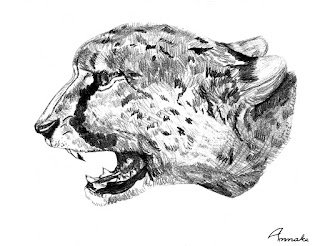 |
| Cheetah, print by Annake |
Sartore says that an iconic photograph, which stands the test of time, can long outlive the photographer. It tells a story. Photographs and photographic projects like The Photo Ark can illuminate the problem and save many endangered animals, if we care enough to help.
For examples of things that young people (and even those of us not so young) can do to help this coming Earth Day — and every day — check out these documents under our Extras tab:
*** Our "Extras" page (the last tab on the top menu) has PDF files of extra materials related to the subjects in our blog posts, mostly aimed towards young people, their parents and teachers. Due to the current pandemic resrictions, we intend to expand this section greatly over the next two months. Check back every week for new files.
J.D., Annake's Garden Gnome
 This post by Annake's Garden is licensed under a Creative Commons Attribution-NonCommercial-ShareAlike 3.0 Unported License.
This post by Annake's Garden is licensed under a Creative Commons Attribution-NonCommercial-ShareAlike 3.0 Unported License.

















